Tince publishing a guide on facts about Ireland several years ago, we’ve had numbers emails asking for a guide to the most interesting facts about Dublin.
So, here we are! They say that “the truth is stranger than fiction” and these unusual, interesting and often unbelievable Dublin facts bear that out.
Below, you’ll discover facts about everything from Hitler’s brother working in one of the most exclusive 5 star hotels in Dublin to witch burnings happening in one of the most popular parks in Dublin. Dive on in!
Weird facts about Dublin and it’s past
The first section of our guide focuses on the more unusual Dublin facts; many of these nuggets of info tend to surprise those that read them.
Below, you’ll discover everything from the largest Viking cemetery outside of Scandinavia and bodysnatchers to some very weird facts about Dublin City.
1. Witch burnings used to take place in Stephen’s Green

Photo left: Matheus Teodoro. Photo right: diegooliveira.08 (Shutterstock)
The well-maintained green sward of St Stephen’s Green may be the hub of Dublin today, but prior to 1663 it was a marshy common used for common grazing, public executions, and yes, even witch burnings.
In 1664, Dublin Corporation needed to raise much-needed revenue (what’s new) so they sold off the land around the common and soon buildings enclosed this former wasteland. It’s now a tree-lined park with many fine memorials.
2. Glasnevin’s watchtowers were built to scare off bodysnatchers

Photos via Shutterstock
The iconic watchtowers and walls enclosing Glasnevin Cemetery were built with a specific purpose – to deter body snatchers. This gruesome practice was a lucrative activity.
Surgeons paid well for bodies on which they could hone their surgical skills and learn more about human anatomy. Nowadays, cadavers can be donated to science to further medical research.
3. Hitler’s brother once worked in The Shelbourne hotel

Photo via The Shelbourne, Autograph Collection on Facebook
This is one of the Dublin facts that surprises most. Alois Hitler lived and worked in Dublin for a time. He was the half-brother of Adolf Hitler and he was a waiter in the Shelbourne Hotel in 1909.
He met local girl Bridget Dowling, they eloped to London and married a year later. Details of the family are a little sketchy after that – I wonder why!
4. Once home to the largest red-light district in the British Isles

Photos via Shutterstock
Stroll down Montgomery Street in Victorian times and you would have been in Dublin’s salubrious red light district (some say that kind of thing went on in the Temple Bar district, too).
Known then as Foley Street, the area was reputedly the largest red light district in the British Empire. Legend has it that this was where the Prince of Wales (later King Edward VII) lost his virginity.
5. It’s home to the largest Viking cemetery outside of Scandinavia
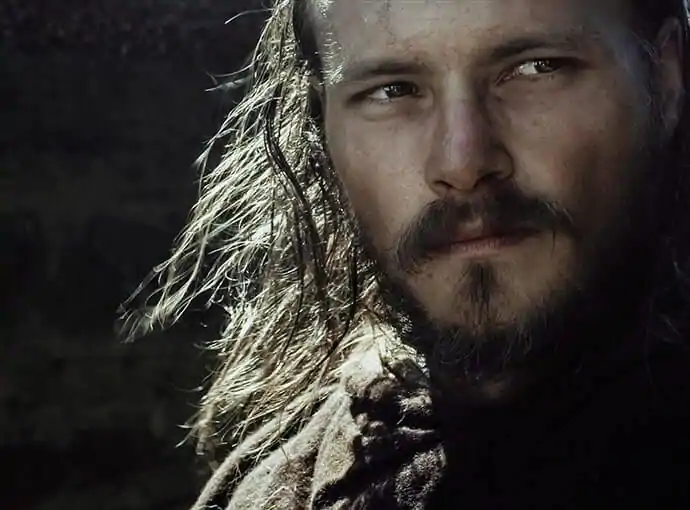
Photo by Gorodenkoff (Shutterstock)
Since the 1840s, gravel excavations on the banks of the River Liffey at Kilmainham and Islandbridge have revealed 40 Viking graves making it the largest Viking graveyard outside Scandinavia (see the Dublinia tour for all things medieval Dublin!).
One burial was discovered near the Wellington Testimonial within the Phoenix Park in 1876. It contained the remains of a woman along with bronze Scandinavian brooches, one attached to an 8th century gilt bronze mount.
6. Napoleon’s doctor was from Dublin

Photo by Irish Drone Photography (Shutterstock)
Napoleon’s exile on the remote island of St Helena is well documented. He was cared for by a Dublin doctor, Barry Edward O’Meara. The doctor could speak both French and Italian, no doubt leading to some interesting conversations with his patient.
As a token of his appreciation, Napoleon gave the doctor his toothbrush and other mementos before his death in 1821. This is no ordinary Oral-B disposable however. The silver gilt handle even has the letter N stamped into the design. See it for yourself on display at the Royal College of Physicians of Ireland.
Unique and interesting Dublin facts
Now that we have the weird ones out of the way, it’s time to dive into some more unique and interesting facts about Dublin.
Below, you’ll discover everything from St Valentine remains to the birth of Dracula, bullet holes hidden in plain sight and Ireland’s oldest library.
1. St. Valentine is buried in Dublin

Photo left: Shrine of Saint Valentine by blackfish. Used under CC BY-SA 3.0 License. Right: Public Domain
The Whitefriar Street Church in Dublin is the final resting place of a casket containing St Valentine’s relics. He was a revered 3rd century saint who was executed and buried in Rome.
Centuries later, an Irish priest was permitted to exhume the skeleton. The remains are now kept in a secure vault beneath the Carmelite Church, but there is a beautiful statue and shrine to see if you visit.
2. The author of Dracula was born in Dublin

Photo by Wilqkuku (Shutterstock)
Dublin author Abraham “Bram” Stoker is best known for his Gothic horror novel Dracula. Born in Clontarf in 1847, he was the third of seven children.
After attending Trinity College Dublin from 1864-1870, he earned a living as the business manager of the Lyceum Theatre, London. He wrote the novel in 1897 after a stay in Whitby.
There’s also much discussion online about how the story of the Irish vampire may have influenced the character of Dracula.
3. You can still see bullet holes on O’Connell Street from 1916

Photo by Madema (Shutterstock)
A stroll along O’Connell Street is a must-do for any Dublin visitor (it’s home to the mighty GPO, the enormous Spire and an endless number of shops).
Don’t miss the O’Connell Monument (1775-1847) “The Liberator” and political leader who fought for the restoration of Ireland.
Look closely at the monument and you’ll see bullet holes on the right shoulder and plinth. They were the result of the Easter Rising in 1916.
4. The Guinness factory has a 9,000 year lease
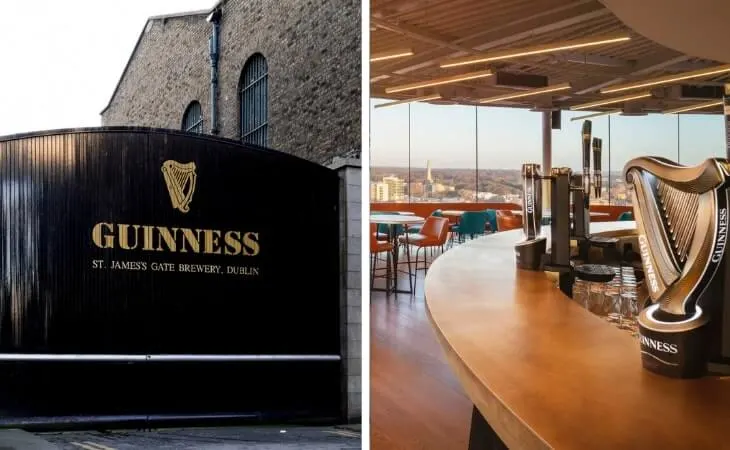
Courtesy Diageo Ireland Brand Homes via Ireland’s Content Pool
Guinness is going to be around for a while yet. In 1759, Arthur Guinness signed a 9,000 year lease on the disused St James Gate Brewery.
The annual payment remains just £45. Seems he was a shrewd businessman in more ways than one! See out guide to the Guinness Factory for more info.
5. The famous ‘MGM Lion’ was born in Dublin Zoo

Photos via Shutterstock
Next up is another of the more interesting facts about Dublin that tends to surprise people. MGM’s signature lion has been heralding their movies since 1957.
The current lion, Leo, is the eighth to have held this important role in which he first starred in 1957. Leo was born in Dublin Zoo and was trained by Ralph Helfer.
6. Dublin’s oldest pub is the Brazen Head

Photos via the Brazen Head on Facebook
Dublin has many authentic old pubs (see our guide to the oldest pubs in Dublin) but the Brazen Head on Dublin’s Merchant’s Quay is officially the oldest in the capital.
The current building was constructed in 1754 as a coaching inn but local legend has it that there has been a pub on the site since 1198. Archaeological evidence confirms a 13th century building on the site which appeared after the medieval map of Dublin circa 840AD.
7. The Rotunda was the first purpose-built maternity hospital in Europe

Photos via Shutterstock
This is one of those Dublin facts that really should be celebrated more. To be honest, we weren’t even aware of this one!
The Rotunda Hospital was founded in 1745 by Dr Bartholomew Mosse and named after the neighbouring theatre. It was the first purpose built maternity hospital in Europe.
Fun Dublin facts for kids
The final section of our guide is packed with interesting facts about Dublin for kids (in other words, there’ll be no talk of vampires or red light districts!).
Below, you’ll find facts about Europe’s largest city park (yep, it’s in Dublin) along with some more weird and wonderful stats.
1. Dublin is home to Europe’s largest city park

Photos via Shutterstock
The Phoenix Park covers a massive 707 hectares and not surprisingly is the largest city park in any European capital city.
This former royal deer park has many attractions including Dublin Zoo and Áras an Uachtaráin, the official residence of the Irish President.
2. O’Connell Bridge is the only bridge in Europe with the same length and width
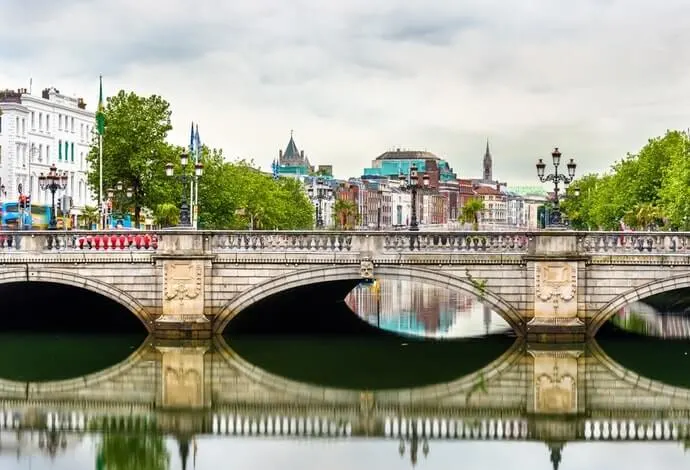
Photo by Leonid Andronov (Shutterstock)
O’Connell Bridge is an important landmark in Dublin but it has another claim to fame. Measuring around 45 metres, it’s the only traffic bridge in Europe that’s as wide as it is long!
3. The name ‘Dublin’ means ‘Black Pool’
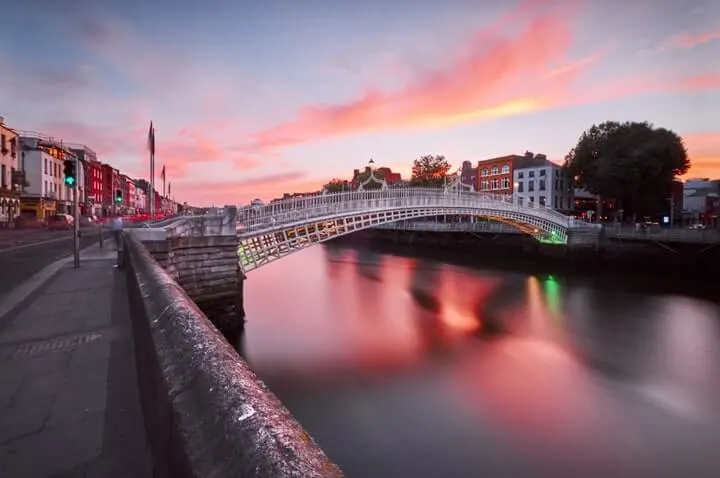
Photo by Bernd Meissner (Shutterstock)
The name Dublin comes from the Irish Dubh Linn, Old Irish Gaelic term meaning “Black Pool”. This referred to a murky lake used by the Vikings to moor their ships after sailing up the River Liffey.
4. Home of Ireland’s oldest library

Photo by James Fennell via Ireland’s Content Pool
Opened to the public in 1707, Marsh’s Library next to St Patrick’s Cathedral was the first pubic library in Ireland.
It contains over 25,000 books from the 16th, 17th and 18th centuries along with around 300 manuscripts. It is visited by over 23,000 people every year.
5. There are over 130 rivers in Dublin

Photo by Lukas Fendek (Shutterstock)
It’s true! County Dublin has over 130 named rivers and streams, and a whole lot more unnamed tributaries. You tend to stumble upon them as you tackle some of the many walks in Dublin.
6. Dublin was a Viking settlement in the 10th century

Photo left: MikeDrago.cz. Right: Gorodenkoff (Shutterstock)
Dublin was a Christian ecclesiastical settlement even before the Vikings arrived in 841. They established a settlement known as Dyflin. Despite local attacks by native Irish, they remained firmly entrenched until the Norman Invasion of Ireland in 1169AD.
7. Dublin Castle was the first building in Ireland to get glass windows
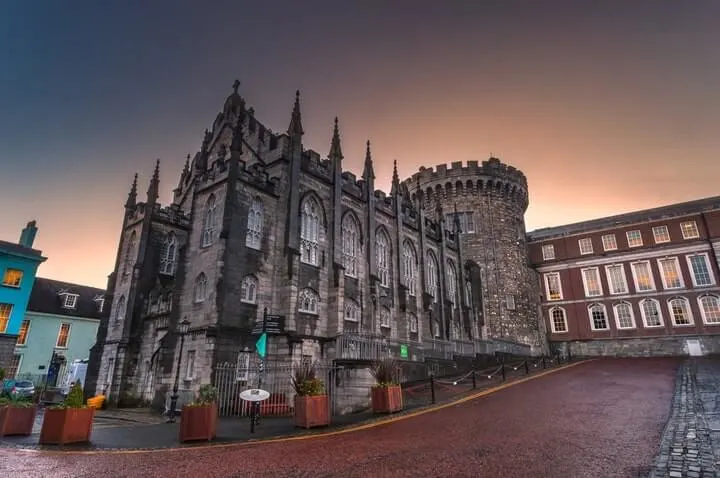
Photo by Mike Drosos (Shutterstock)
Glass was an expensive luxury in medieval times. However, the Great Hall of Dublin Castle was built by King John of England in 1243 with no expense spared. It was the first building in Ireland to have glass windows.
8. The Ha’penny Bridge was Dublin’s first toll bridge

Photo by Bernd Meissner (Shutterstock)
Built in 1816, the Liffey Bridge was a cast iron pedestrian bridge over the river. It was commonly known as the Ha’penny Bridge as a half penny was the toll charged for anyone using the bridge.
There were turnstiles at either end of the bridge. The toll remained the same for 100 years until it was dropped in 1919.
What Dublin facts have we missed?
I’ve no doubt that we’ve unintentionally left out some very interesting facts about Dublin City and the wider county in the guide above.
If you have a place that you’d like to recommend, let me know in the comments below and I’ll check it out!
FAQs on certain facts about Dublin
We’ve had a lot of questions over the years asking about everything from ‘What are the weirdest facts about Dublin?’ to ‘What is the population of Dublin City?’.
In the section below, we’ve popped in the most FAQs that we’ve received. If you have a question that we haven’t tackled, ask away in the comments section below.
What Dublin facts are the most surprising?
The facts about Dublin that tend to surprise people the most are 1, witch burnings used to take place in Stephen’s Green and 2, Hitler’s brother once worked in The Shelbourne hotel.
What are 5 interesting facts about Dublin?
The ‘MGM Lion’ was born here, it was a Viking settlement in the 10th century, there are 130+ rivers here and it’s home to Europe’s largest city park.
What is an interesting fact about Dublin?
One of the Dublin facts that surprises many is the St. Valentine is buried in Dublin. Yep. You’ll find his remains in Whitefriar Street Church.

